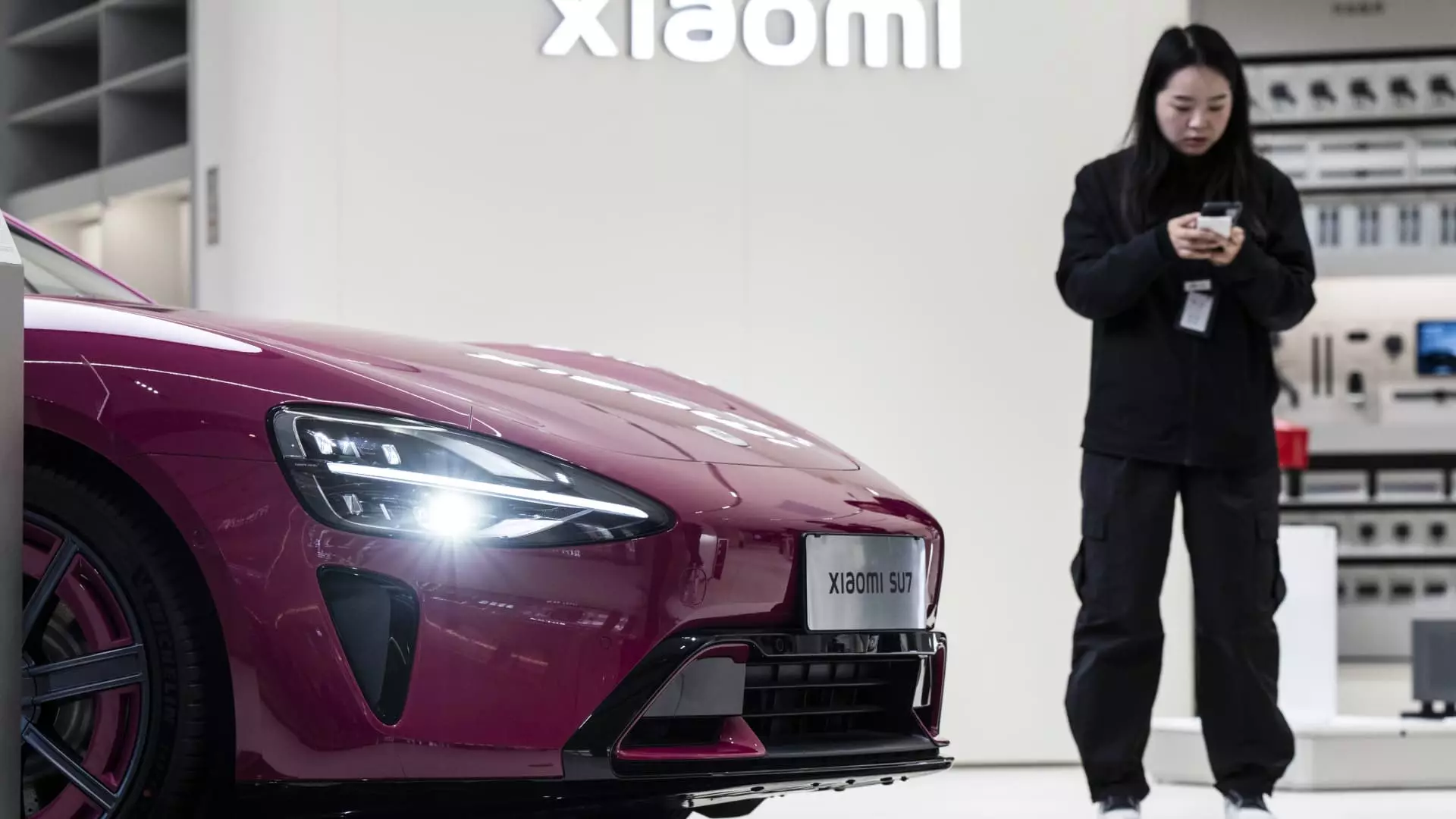March 2023 witnessed an electrifying emergence in China’s automobile industry as electric vehicle (EV) manufacturers like Xiaomi, Xpeng, and Leapmotor boasted impressive delivery figures, each surpassing the 30,000 unit mark. In stark contrast to their struggling competitors, these companies showcased growth that reflects increasing consumer demand and innovative manufacturing strategies. Among this fierce competition, BYD remains the unchallenged market leader, having delivered over 370,000 vehicles in the same month alone. However, while the numbers paint a picture of prosperity, they also obscure the perilous challenges left in the shadow of success, particularly concerning safety and accountability.
Xiaomi’s triumph in recording over 29,000 deliveries—a significant leap compared to previous months—seems overshadowed by a tragic event involving their flagship model, the SU7, that left three individuals dead. This juxtaposition—between innovative achievement and harsh consequences—serves to underline the complexities surrounding rapid expansion in an industry still grappling with fundamental safety issues. Xiaomi’s announcement that the vehicle was operating under navigation on autopilot just prior to the collision raises serious questions about the integrity of their autopilot systems and the preparedness to manage emergencies.
The Perils of Autopilot Technology
The unfortunate incident with Xiaomi highlights an unsettling trend among emerging electric vehicle companies: the rush to integrate advanced technologies without adequate testing or regulatory oversight. While companies scramble to position themselves as frontrunners in the innovation race, they must not undervalue the responsibility that comes with high-tech solutions. The defective performance of autopilot features could erode consumer trust and perhaps initiate a backlash against the automation trend altogether.
Competitor Xpeng claims a soaring expansion of 268% year-over-year—a figure that might sound impressive but begs examination of how they prioritize technology over driver safety. This preference for extravagant publicity can risk giving the impression that automakers are more focused on numbers than on safety and social responsibility. Should we not have a deeper conversation about the ethical implications of evading responsibility, especially when situations like these arise? These tragic accidents dwarf the immediate successes of sales figures, reminding us that human lives should take precedence over bottom-line growth.
Racing to the Top: The Role of Competition
Leapmotor’s 154% growth rate over the year demonstrates how competition fuels innovation, yet it raises distinct concerns over the sustainability of such explosive growth. Fast-paced development driven by market competition must not translate into lax safety protocols or inadequate infrastructure. This is especially true when balancing the advancements in aesthetic and performance enhancements with responsible decisions regarding consumer safety.
Meanwhile, BYD’s commanding lead in the industry serves as a reminder of how legacy systems and gradual evolution can yield more concrete stability in the marketplace. The company’s focus on integrating technology with a clear understanding of consumer needs and safety considerations makes it a paradigm for what sustainable growth could look like.
Tesla’s Decline: A Reflection of the Market Dynamics
Tesla, the once undisputed champion of electric vehicles, has found itself caught in a decline with an 11.5% drop in year-over-year sales growth. This trend suggests not only a significant shift in market dynamics but the possibility that the company, which had shaped consumer expectations around EVs, is now faltering at a critical juncture. The entrance of regional players like Xpeng and Leapmotor demonstrates the volatility and unpredictability inherent in this sector, leading to questions about whether even the giants can maintain their hold.
As these competitors rise, Tesla’s mounting challenges highlight the delicate balance of maintaining innovation while addressing consumer concerns surrounding quality and accountability. As other companies deliver pulsating increases in output, Tesla must introspectively analyze whether their technology still aligns with consumer expectations and, crucially, their safety.
The Ethics Behind Innovation
In this volatile electric vehicle landscape, it becomes glaringly evident that innovation must be paired with an unwavering commitment to ethical practices. The industry is in dire need of a paradigm shift towards prioritizing consumer safety and environmental accountability over relentless growth and ostentatious marketing. As these electric vehicle entrepreneurs stake their claims in an artificially inflated market, their long-term viability will hinge on cultivating consumer trust alongside resilience.
As the success stories of the month unfold, we’re presented with a dual narrative—one that celebrates progress while underscoring the potential hazards that accompany it. The stakes are high, and the road ahead remains fraught with challenges. Balancing ambition with integrity in the electric vehicle sector has never been more crucial, lest we trade lives for profits.

